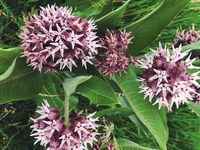The pack guide is organized by color and plant family and features over 180 of Colorado’s most common wildflowers. This fully revised second edition makes flower identification easy. Its compact size is perfect for hikers and backpackers.
From Rocky Mountain Wildflowers Second Edition by Marlene Borneman
USING THIS PACK GUIDE
It is hard to miss the brilliant displays of Rocky Mountain Wildflowers! Do you ever wonder about the names of the flowers that line the trails and roadsides? You don’t need to be a botanist to identify flowers and set foot into the fascinating world of montane and alpine wildflowers. This pack guide is designed for both the novice and the enthusiast to identify and get to know Colorado’s common, not-so-common and rare wildflowers.
PLANT FAMILIES
Plant families are listed alphabetically within each color section. Plants are classified into family groups. There have been many recent changes in classification of flowering families and species due to genetic research and evidence. This book uses more recent family classifications.
COMMON AND SCIENTIFIC NAMES
Common names are listed for each flower. A single flower can have several common names. The most common name is listed, but some wildflowers may have more than one. Using common names can often lead to miscommunication and confusion, so it is best to learn the scientific names (genus and species). Taxonomy is constantly evolving so systems of naming and classifying plants will not always be in agreement.
LIFE ZONES
Plants grow in elevation ranges called life zones. Note that environmental differences and changes affect species, so plants are able to cross life zones. Colorado has five life zones:
Plains: 3,315 ft.-5,600 ft.
Foothills: 5,600 feet to 8,000 feet
Montane: 8,000 feet to 10,500 feet
Sub-alpine: 10,500 feet to 11,500 feet
Alpine: 11,500 feet to 14,431 feet
LOOK FOR
Under this section, flower characteristics include: height, leaf shape, and general flower structure. Any unique identifying characteristics are also provided. A 10x hand lens is recommended to closely examine hairs, markings, etc.
BLOOM
This section provides the most likely time to find the greatest number of flowers in bloom. Be aware there are several variables to blooming times: seasonal temperatures, precipitation, (including snowpack), storms/winds, and changing soil conditions.
Here’s a complimentary page featuring a flower from the new pack guide: The Showy Milkweed.
******
SHOWY MILKWEED
Asclepias speciosa
Dogbane Family (Apocynaceae)
Life Zone: Plains, foothills, montane
Habitat: Open meadows, sandy-gravelly soil, roadsides
Height: 1’-4’
Look For: large, broad oblong-shape leaves opposite and deeply veined on a thick stalk. Rounded clusters of five star-shaped pink-white petals forming flowers on umbels.
Bloom: Summer
 CMC Press
CMC Press


Add a comment
Log in to add comments.